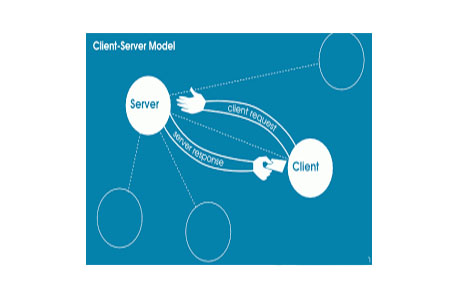
cs architecture is a client/server architecture, in which the client relies on the server to obtain resources. The cs architecture reduces network traffic by providing query responses. It has three types of structures: one-layer architecture and two-layer architecture. architecture and three-tier architecture.

C/S architecture is a client/server architecture, in which the client relies on the server to obtain resources, and the C/S architecture reduces the network by providing query responses flow. It has three types of structures: one-layer architecture, two-layer architecture and three-layer architecture.
C/S architecture is a mainstream technology in today's network development architecture and was first developed by the American Borland Company. Next, I will introduce this architecture in detail in the article, which has certain reference value and I hope it will be helpful to everyone.

【Recommended course: PHP Tutorial】
The meaning of C/S architecture
C/S architecture is called client/server architecture. It is a network architecture in which the client is the user running the application. On PC or workstation, the client relies on the server to obtain resources. The C/S architecture reduces network traffic by providing query responses rather than total file transfers. It allows multiple users to update to a shared database through a GUI front-end. Communication between clients and servers generally uses remote calls (RPC) or standard query language (SQL) statements.
Basic characteristics of C/S architecture:
(1) The client process contains solution-specific logic and provides a link between the user and the rest of the application system interface between. Server processes act as software engines that manage shared resources such as databases, printers, modems, or high-performance processors.
(2) Front-end tasks and back-end tasks have fundamentally different requirements for computing resources, such as processor speed, memory, disk speed and capacity, and input/output devices.
(3) The hardware platforms and operating systems of the client and server are usually different. Client and server processes communicate through a well-defined set of standard application programming interfaces (APIs) and RPCs.
(4) An important feature of C/S architecture is scalability, they can be scaled horizontally or vertically. Horizontal scaling means adding or removing clients and workstations with only a slight impact on performance. Vertical scaling means moving to a larger and faster server computer or multiple servers.

Type of C/S architecture
One-layer architecture
Here In a type C/S architecture setup, the user interface, marketing logic and data logic exist in the same system. However, it is difficult to manage due to data differences. For example, MP3 players and MS Office are single-layer applications.
Two-tier architecture
In this type, the user interface is stored on the client machine and the database is stored on the server. Database logic and business logic are documented on the client or server, but require maintenance. If business logic and data logic are collected on the client side, then it is named as thick client thin server architecture. If business logic and data logic are handled on the server, it is called thin client fat server architecture. This is considered affordable.
In a two-tier architecture, the client and server must be merged directly. If the client provides input to the server, there shouldn't be any middleware. This is done to get results quickly and avoid confusion between different clients. For example, online ticket booking software uses this two-tier architecture.

Three-tier architecture
In the three-tier architecture, additional middleware needs to be used, which means client requests The server needs to be entered through this middle layer, and the server's response is first received by the middleware and then to the client. Middleware stores all business logic and data channel logic, middleware increases flexibility and provides optimal performance.
The three-tier structure is divided into three parts, namely the presentation layer (customer layer), application layer (business layer) and database layer (data layer). The client system manages the presentation layer, the application server is responsible for the application layer, and the server system monitors the database layer.

Summary: The above is the entire content of this article, I hope it will be helpful to everyone.
The above is the detailed content of What is the C/S architecture?. For more information, please follow other related articles on the PHP Chinese website!